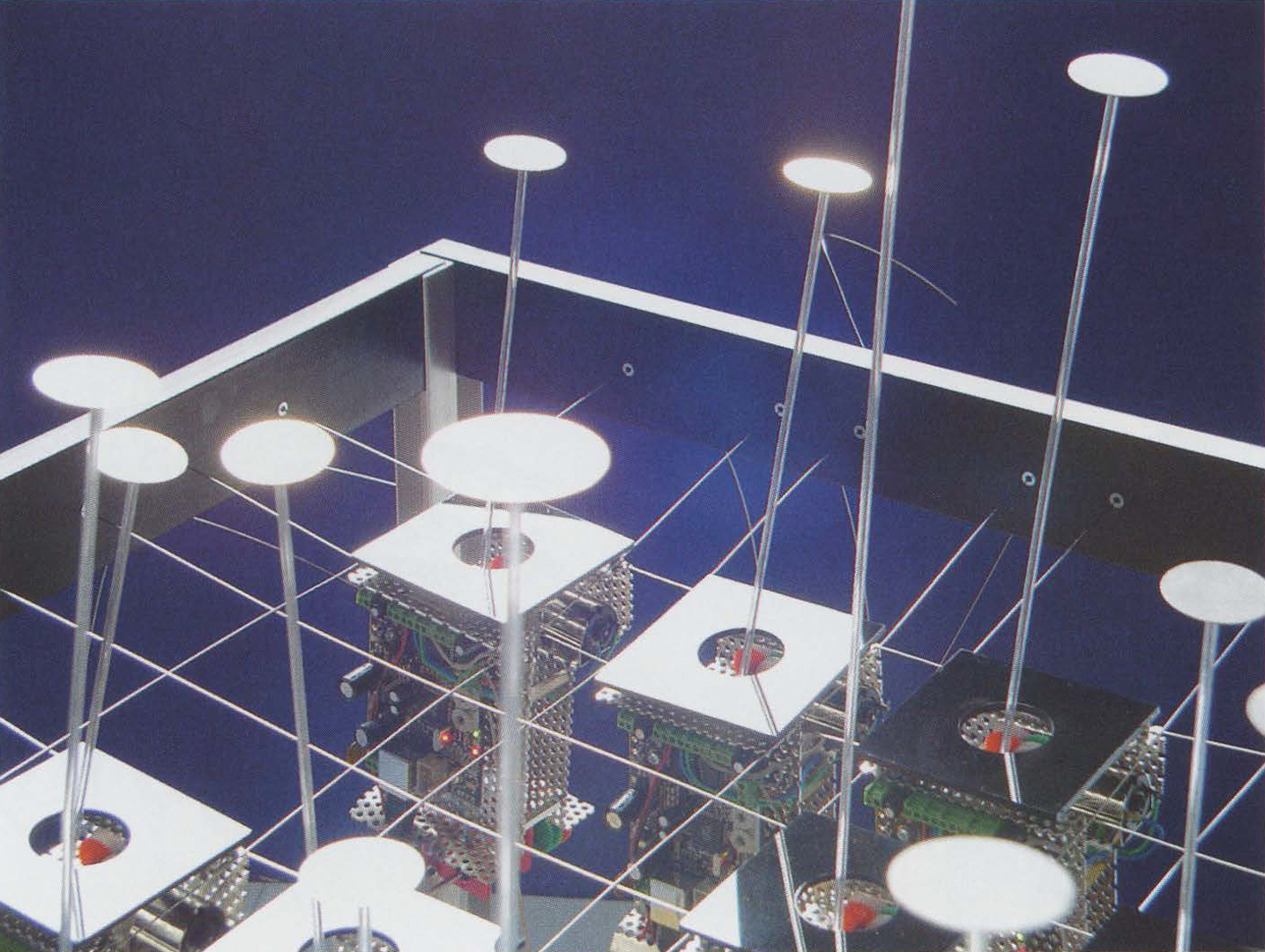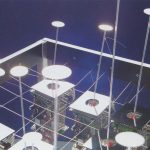Jee Hyun Oh: GORI.Node Garden – Gardening Two
Artist(s):
Collaborators:
Title:
- GORI.Node Garden - Gardening Two
Exhibition:
Medium:
- Interactive art installation and environment
Size:
- 10' x 10' x 20'
Category:
Artist Statement:
GORI.Node Garden is a physical and ambient data visualization as a network garden in which each plant is nourished by communication data. The network garden has plants with blossoms and roots that feed the data to the garden by “watering” when each plant vibrates, similar to how plants move in the wind.
Audiences are encouraged to participate by using instant messaging. They create communication data by “logging in,” “sending,” or “receiving” messages. When they log out, they are asked if they want to implement their chat communication in the garden. When the data enter the garden, a participant becomes a gardener and the data are recycled.
GORI.Node Garden proposes an alternative view of the network. “Gardening” emphasizes the intentional blurring of the distinctions between natural and man-made materials and “Gardening data” explains circular flow and the recycling of data.
Metaphors of nature are used here to represent that flow; chat communication is “a seed.” Identifying each plant with the seed is to “plant.” Pushing data into the installation from the database is “watering” and the database is a “water tin.”
Technical Information:
The project consists of three parts; computers used as terminals for running GORI instant messenger, a server computer running Flash Communication Server with PHP/MySQL, and an installation of electronic plants.
A plant called GORI consists of a steel disk on the top, an acrylic tube with light source inserted, a small control board connected with Ethernet cable, two motors, and related accessories; one motor is for shaking and the other for growth.
When participants move to the gardening stage, they see a Flashbased screen where the same layout of the garden is displayed. They can view the current status of each plant (how much it has grown, whose communication was planted first, and later, whose communication provided water, etc).
After the audience adds, deletes, or “waters” data, the updated information is stored in the database and sent to the installation in real time.






